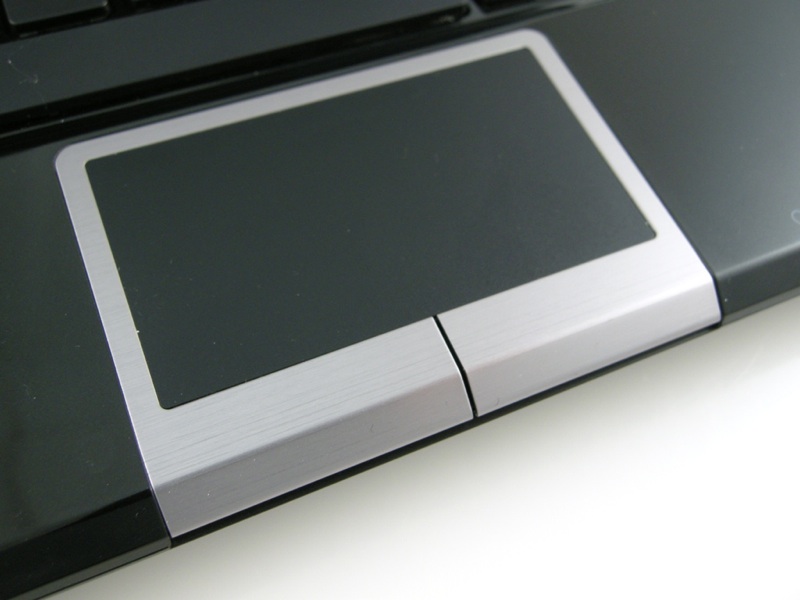Here is a view of the Asus Eee PC-1000HE keyboard, with a US Quarter-Dollar coin
set on top of it, to help with the size perspective.
_Keyboard.jpg)
Note that the main keys are claimed by the manufacturer to be 92% of standard
size. I can only say that they are "big enough", even for my relatively large
hands. I can actually type pretty well on this keyboard. The function keys and
cursor keys are smaller, but that's not a problem. Like many notebook and netbook
computers, many of the keys have an additional function. In this case, the blue
colored legends indicate what function the key performs if preceeded by a press
of the (blue-colored) Fn key.
Here is a comparison of the MacBook keyboard vs. the Asus EEE PC keyboard side
by side.
_MacBook_vs_Eee_PC_Keyboards.jpg)
The keys are similar in size to one another. I think that the Eee PC keys have
more depth (and more keystroke travel, a good thing in my opinion). The space
separation around each of the keys is probably quite similar, but it looks like
there is more space around the Mac's keys because of the silver vs. black contrast
as compared to the black surrounding black on the Eee PC keys. Spacing is good,
so that clumsy fingers hit only the key that they aim for...
Here is the lower right side of the Asus keyboard, which shows the embedded cursor
keys. Some netbooks have such cramped keyboards that you have to hit a function key
first to access a cursor motion key, but that's not the case here.
_Right_Side_of_Keyboard.jpg)
If you look closely, you'll see that the most frequently-used cursor motion keys,
namely Up/Down/Left/Right are a single keystroke. The less-frequently-used motion
keys, namely Home/End/PgUp/PgDn, require you to tap the blue Fn key first, and then
one of the four main cursor keys. This is a very acceptable arrangement for maximizing
the utility of the available space on a compact keyboard.
Here is a view that shows the entire keyboard.

On the subject of embedded keypad keys, note that up at the top right corner of
the keyboard are the frequently-used Insert and Delete keys. These are dedicated
single-stroke keys, as befits their frequent use. Their secondary functions, which
are accessed by using the blue Fn key as a prefix, are the very infrequently-used
Num Lk (Number Lock) and Scr Lk (Scroll Lock) functions. Yes, you can actually hit
Fn / Num Lk to turn on an embedded numeric keypad mode:
U= 4 I= 5 O= 6 P= *
J= 1 K= 2 L= 3 ;= -
M= 0 ,= .= . /= +
...but trust me, if you are doing a ton of numeric input, you would be far better
off buying an external USB 10-key keypad!
There is also a built-in pointing device, a touchpad, with left and right buttons to
emulate a mouse.
_Touchpad.jpg)

The two buttons require a solid push and give a satisfying click for feedback, which
is appreciated by me. In addition to simply moving the mouse cursor around the screen
as you move your finger around the touchpad, this one can do a number of special tricks
by use of two or more fingers at a time. For example, dragging two fingers side-by-side
up or down the touchpad can emulate the scroll function of a "wheel mouse", and with
certain finger motions you can do exotic things like pop up a "magnifying glass window"
over the cursor location. Unfortunately, the special functions of the touchpad are
not documented in writing in the Asus user manual, or in any online manual from
either Asus or from the manufacturer of the touchpad mechanism that I can find. The only
way to learn how to use the keypad to its fullest is to use the online help of the
keypad driver. Maybe someday I will type up the information so I can print it out and
look at it!
Ok, that's the quick tour of the keyboard.
Let's take a look at some other design features: (Click here for Page 4)
Last edited January 1, 2010 by WØJT